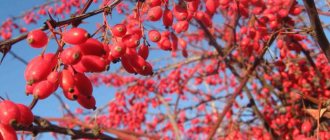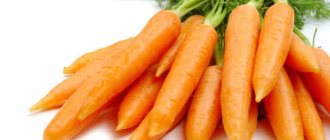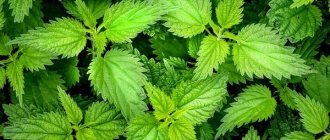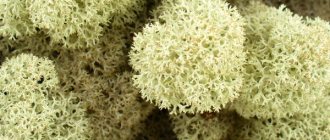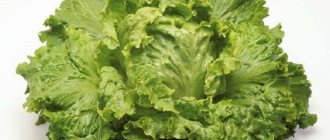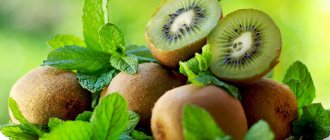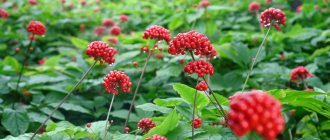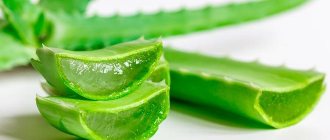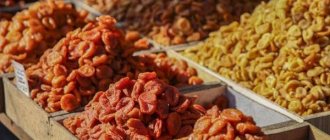The many beneficial properties of barberry make the plant unique. It is recognized by both official medicine and medicinal medicine. However, this is not his only incarnation. Amateur and professional gardeners enjoy using it to decorate parks and garden plots. The shrub is good at all times of the year.
In the spring, during the flowering period, it attracts bees with its aroma, during the ripening period it pleases the eye with a riot of crowns of various flowers, depending on the variety, and in the fall it gives wonderful fruits - beautiful, piquant and healthy.
Chemical composition of berries
The relatively small barberry berry contains a great variety of chemical elements important for the human body. Thanks to this, barberry is considered one of the leaders among medicinal plants.
Barberry berries contain the following substances:
- ascorbic acid (vitamin C);
- vitamins E, K;
- tannins;
- organic acids (tartaric, malic, citric);
- pectins;
- carotenoids (lutein, xanthophyll, chrysanthemumaxanthin, auroxanthin, flavoxanthin, capsanthin);
- alkaloids (berberine, oxyacanthin, columbamine, palmatine, etc.);
- ash;
- small amount of carbohydrates.
The calorie content of freshly picked barberry is about 30 kcal per 100 grams, dried - a little more than 150 kcal per 100 grams.
The nutritional value
Barberry uses not only berries, but also leaves, roots and even the bark of this amazing plant. A yellow dye of natural origin is made from the bark, and the leaves can be eaten - they contain beneficial malic and citric acids, vitamins C and. The root saves from frequent bleeding, and the berries promote the excretion of bile and support liver health.
Barberry rightfully occupies an important place among dietary products due to its minimal calorie content.
100 g of product contains only 29.5 kcal.
At the same time, berry jelly already contains 218 Kcal, so it can hardly be called dietary. Nutrient content per 100 g of fresh product
| Squirrels | 1 g |
| Fats | 0 g |
| Carbohydrates | 9.5 g |
| Ash | 0.7 g |
| Water | 85 g |
Barberry berries
Oblong, round - red, dark blue or light beige, depending on the variety, barberry fruits are distinguished by a unique sweet and sour taste, which makes them attractive for use in cooking - not only in confectionery (sweets, jam, marshmallows, candied fruits , marmalade and drinks), but also for preparing marinades and sauces. In dried form, it is used as a seasoning for meat dishes.
Inside each berry there are seeds reaching 5 mm. In the Caucasus, it is customary to add berries to pilaf. The pleasant aroma and sourness of the fruit have found application even in the distillery industry. The taste of barberry is incomparable and adds charm to dishes.
Also, berries are included in cosmetics. They have an antiseptic and anti-inflammatory effect and tone the skin. Moreover, not only the fruits, but also the leaves and roots of the plant have healing properties.
Infusions help lighten the skin, remove age spots and fight wrinkles on the face. Toning substances heal and strengthen hair, accelerate its growth and help with dandruff.
Contraindications and harm of barberry
- You should not drink infusions and decoctions with barberry for a long time and increase the recommended dosages - this can lead to constipation.
- With ovarian dysfunction, as well as with accompanying bleeding, you should not drink products with this plant.
- For bleeding during menopause, products containing it are also contraindicated.
- Considering that barberry decoctions have choleretic properties, if you have gallstones, you should consult a specialist.
- For some types of hepatitis, this remedy may be contraindicated, so consult your doctor before using it.
- If you have cirrhosis of the liver, barberry should not be used!
- If you have diabetes, it is important to be careful with the use of this plant, because it contributes to a sharp decrease in blood sugar levels.
- Barberry should not be used for thrombophlebitis due to its ability to increase blood clotting, as well as for people with high acidity of gastric juice.
- Products made from the roots and bark of the plant promote vasoconstriction, so they are contraindicated for vascular spasms.
- A decoction of the roots, while helping to lower blood pressure, can harm people with hypotension.
- During pregnancy, as I wrote above, products with this plant (especially with its leaves) can cause miscarriage, so use them with caution during this period. They should not be used during breastfeeding.
- Products containing the plant are not recommended for use by children under twelve years of age.
Of course, there are many contraindications to using barberry for treatment, however, if you are not in the risk zone, you can safely enrich your diet with it. After all, the beneficial properties of this plant make it extremely valuable for our health.
Barberry is also an excellent choice as a hedge. If you are planning to grow it on your site, know that this shrub is unpretentious, although, of course, you need to take into account some of the features of its cultivation.
Source
Other articles on the topic “Benefits and harms of berries”
Useful properties and contraindications of lingonberries, recipes
Properties of cloudberries, benefits and contraindications, recipes
What can be prepared from red viburnum berries, beneficial properties and contraindications
What is the difference between black and red hawthorn, benefits and harms
What is the plant useful for?
The healing power of barberry is difficult to overestimate. It is known that it was used in Ancient Greece. The drug from it purified the blood. Tibetan monks considered it the elixir of youth.
Nowadays, all kinds of tinctures and decoctions of berries, leaves and roots are taken for treatment:
- colds (they are antipyretic and antimicrobial agents);
- successfully remove toxins from the body;
- promote blood clotting;
- cope with uterine bleeding;
- the presence of the alkaloid berberine allows it to have a choleretic effect in cholecystitis (it is effective even in the fight against a serious illness - hepatitis);
- help with inflammation of the genitourinary system (cystitis and pyelonephritis);
- for gastrointestinal diseases;
- as a blood pressure regulator;
- inhibits the growth of malignant tumors.
Where are barberry fruits used?
Barberry is widely used in folk medicine, cooking, cosmetology, perfumery and aromatherapy.
Due to the fact that these fruits contain many medicinal, prophylactic and beneficial substances, barberry has gained such popularity.
Compound:
- vitamins A, B, K, C;
- carotenoids;
- pectin;
- tannins;
- organic acids;
- resin and ash;
- alimentary fiber.
Barberry contains no more than 8 g of carbohydrates and consists of 85% water. Therefore, barberry is considered a dietary product, because it contains neither fats nor proteins. But berries still saturate the human body with health and strength.
Positive effects of barberry fruits on the body:
- increasing human immunity;
- increasing the rate of blood clotting and stabilizing blood formation processes;
- appetite improves and the functioning of the gastrointestinal tract improves;
- removing toxins from the body;
- increased performance;
- helps increase the stability of the nervous system;
- relieves spasms and acts as a pain reliever.
The above positive effects are the main characteristics of barberry when consumed correctly. The benefits of berries extend to other areas as well. However, like any remedy, barberry has contraindications.
In what cases is it better to limit or refuse the use of barberry berries:
- pregnancy (all trimesters) and breastfeeding;
- diseases of the kidneys or organs of the urinary system;
- cholelithiasis;
- heavy bleeding during menstruation in women or menopause;
- periods of severe depression;
- individual intolerance to the components of the berries;
- children under 5 years old;
- hepatitis.
The existing contraindications are based on the fact that the use of barberry berries for food can cause the following consequences:
- nausea and dizziness;
- a sharp drop in blood pressure;
- nosebleeds or increased blood flow in women during menstruation;
- inhibited reactions, drowsy or lethargic state;
- urticaria and swelling of the extremities;
- disturbance of uterine tone in pregnant women;
- convulsions.
The above negative consequences occur only in case of individual intolerance to the berries or in case of a gross violation of the dosage for consuming the product.
It is also worth consulting with specialists before taking berries, and it does not matter in what field - cosmetology, traditional medicine or cooking. Especially if you have chronic diseases.
We recommend that you familiarize yourself with red barberry
If there are no contraindications, then it is important to maintain the specified proportions and consumption rates.
In cooking
Most often and more widely, barberry is used in the culinary field. Juice and fruits are added to dishes, both hot and desserts, marinades, salads and vegetable dishes.
The fruits have a sour taste and are used both fresh, dry or crushed. In production where fresh berries are used, they are used to make juice, syrup, compote, liqueur, liqueurs or extract. And drinks that do not contain alcohol are great for helping with thirst. Confectioners began using barberry berries in the manufacture of sweets, marmalade, marshmallows, jams and jelly, where this product is added in any form. Such sweets acquire a pleasant sour-sweet taste.
Dried fruits are great for creating seasonings. For example, Caucasians mix crushed barberries with pepper and salt to create a spicy seasoning for meat. Berries are often added to ready-made pilaf and fatty meat dishes. This seasoning gives food an original taste, smell and color. The easiest way to turn the fruit into a seasoning is to grind the dried berries in a coffee grinder. The resulting powdered product can be added as a seasoning during cooking (no more than 10 g) or before serving.
Some of the most delicious recipes are simple.
Jam. Take 1 kg of barberry berries, 1.5 kg of apples or serviceberry, 1.5 liters of water and 3 kg of sugar. Before cooking, the fruits are covered with sugar (1.5 kg) and left for 24 hours. Then a syrup is boiled from the remaining sugar and water. This syrup is poured over barberries, pre-mixed with other berries or fruits (if apples are used, they are cut into slices or cubes). This jam needs to be cooked for 5 hours with one stand.
Marinade. This marinade is used as a seasoning for any meat. So, take 1.5 kg of fruit, 1 liter of 6% table vinegar, 750 g of sugar, cinnamon (15 g), black peppercorns (10-15 pieces) and salt (to taste). Rinse the berries thoroughly and place in jars. Then mix vinegar, sugar, spices and salt and pour this marinade over the barberries. This seasoning is infused for 5 days. After this period, it is ready for use.
We recommend that you read: When to prune raspberries
Garnish. To prepare the side dish, you need to take several branches with berries, put them in jars, pour cold water and add salt. Moreover, with the proportions for 750 ml of water 100 g of salt. It is necessary to take into account that the water must completely cover the fruits. So the berries should be infused for 21 days in a cool place. After the expiration date, the side dish will be ready. It is used to marinade meat for barbecue, added to roasts or vegetable dishes to enhance the taste.
In folk medicine
The berries have been used for medicinal purposes for many centuries. Even in Ancient Greece, the fruits were used as an antibacterial agent, which helped to quickly heal the wounds of soldiers. It was also used as a medicine that cleansed the blood of toxins.
Barberry berries:
- stop heavy bleeding and block the inflammatory process;
- treat colds and help reduce body temperature;
- remove toxic substances from the blood;
- prolong youth and slow down the aging of the body;
- help treat kidney, liver and stomach diseases;
- help reduce blood sugar levels;
- have a therapeutic effect in the fight against tuberculosis, rheumatism and gout;
- normalize blood pressure and heart rate.
The fruit contains potent substances. Therefore, it is important to follow a clear dosage. Excessive consumption of these berries is fraught with serious consequences. In particular, it is necessary to take barberry carefully when taking antibiotics or an antihistamine. It is best to consult your doctor before using barberry as a medicine and take the berries under the strict supervision of a specialist.
These berries have a beneficial effect on tooth enamel and create a protective effect on the gums. Natural, only squeezed juice has found use in the preparation of an antipyretic, as well as an anesthetic or tonic.
In order for barberry not to lose its medicinal properties, it must be collected at the appropriate time. For example, the flowers of this plant are collected at the initial stage of bud formation. The bark of the bush is collected in spring, when flowering ends. And the root is collected in the first spring month or in the last autumn month. By following these simple collection rules, you can ensure that all the components of barberry, and not only the berries, will serve as a faithful assistant in the fight against diseases.
We recommend that you read: Do you need to cut remontant raspberries?
Barberry drink. This drink has many healing properties. For example, it quenches thirst, improves appetite, lowers body temperature, removes bile from the body and has a diuretic and laxative effect.
To prepare 1 liter of a healing drink, you need to take 50 g of dried fruits, 60 g of sugar, 1 g of vanilla and 1.1 liters of water. Before cooking, wash the fruits thoroughly, add boiling water and cook for 10 minutes over low heat. After time, the broth is infused for 1-2 hours, after which the berries are filtered and sugar, vanilla diluted in boiled water are added to the liquid and mixed thoroughly.
In cosmetology
The beneficial effects of barberry extend not only to the internal organs of a person, but also to the external state. Cosmetologists have long noted that barberry berries, its juice, extract or extract added to cream, decorative cosmetics or skin care products are effective. The extracts are often used in the production of shampoos, dyes, balms and other hair cosmetics. Due to its rich vitamin composition, barberry is highly valued among cosmetology experts and has been recognized as the most effective in use.
However, it is not necessary to buy expensive store-bought products. An effective hair rinse can be prepared at home. To do this you will need:
- just over half a glass (250 grams) of barberry fruit
- 1.5 liters of boiling water.
A glass of berries is poured into a small saucepan and poured with boiling water. Then leave the infusion for 40 minutes. After time, the hair decoction is ready. Directions for use: After each wash, rinse your hair with this product. The hair will become voluminous, and if you had problems with dandruff, they will disappear, because... Barberry decoction works well against this problem.
But that is not all. The remaining broth can and should even be frozen in small portions (ice trays) and then wiped with ice cubes on your face after washing. This procedure smoothes facial wrinkles and rejuvenates the facial skin, giving it elasticity and freshness.
Preparing plants for the winter
When to collect barberry
The best time to harvest is late autumn, when all the fruits are finally ripe. Unripe fruits are poisonous and dangerous to health, as they contain too many alkaloids.
After collecting the berries from the bush, they must be washed with running cold water and dried. Any container with a mesh bottom is suitable for this - a sieve, sieve or plastic tray with holes. The berries are placed in one layer, carefully placed to avoid damage to the peel. You need to treat fruits with special care if they have already been caught by frost.
Drying berries, leaves and roots for the winter
Drying barberry fruits is no different from drying other berries. A baking sheet with fruits laid in one layer is placed in an oven preheated to 40-50 degrees, gradually increasing the temperature to 60 degrees. It's easy to check readiness. Squeeze a handful of berries in your palm. If they do not stick together, then they are ready. Beneficial properties last up to two years. It is best to store in a glass container with a lid or in birch bark containers.
Barberry leaves along with twigs are collected in late spring or early June. The leaves are still very tender at this time. Typically, branches with leaves no longer than 10 cm are cut. It is best to do this after rain, when possible dust has been washed away.
The branches are laid out on a flat surface in the shade; it is better to do this under a canopy, since natural drying will take at least a week. After this, the dry leaves can be placed in fabric bags. Like berries, they retain their healing properties for two years.
Barberry roots are harvested in late autumn. For this, a third of all the roots of the bush are used. They are cleared of soil and laid out in the dark to dry. This is a rather lengthy process. To speed it up, you can place the roots in the oven. Even at low temperatures (up to 50 degrees C), they will dry out much faster. The roots are preserved for three years without losing their medicinal properties. The roots, dried according to the rules, remain bright yellow.
What does barberry look like?
This beautiful, decorative representative of the barberry family grows on almost all continents, but more often in the countries of the Northern Hemisphere. It is successfully grown in almost all regions of Russia, Ukraine, Belarus and Georgia.
Barberry looks like a large shrub with an average height of about 1.5 - 2 meters or like a small branched tree. But there are plants that reach even 3 meters.
Some types of barberry shed their leaves partially or completely, others are evergreen.
Information: The collection of barberry fruits takes place in the fall, after full ripening. It is best to dry the berries at room temperature or in the oven (temperature should not exceed 45 degrees). Useful products are stored for no more than 2 years .
Application of barberry
This unique shrub is useful from “head to toe”, that is, the roots, berries, and leaves - everything is suitable for preparing healing decoctions.
Fruit decoction
Berry decoction is an excellent remedy for vitamin deficiency. It is prepared very easily, just like regular tea. Barberry berries (a large spoon of fresh or dried fruits are poured into a cup of boiling water and left under the lid until completely cooled. The drink is drunk three times a day. It will also bring relief from colds. You can add a spoonful of honey to a cup of tea.
This drink is also useful for:
- liver diseases (as a choleretic agent);
- pancreatitis (inflammation of the pancreas);
- cystitis (inflammation of the bladder);
- high blood pressure;
- upset stomach;
- damaged blood vessels.
Decoction of leaves
Pour two large spoons of dried leaves into a cup of boiling water and leave in a glass container with a lid until it cools completely. Then filter. The product is ready for use. It will help with:
- cholecystitis;
- sore throat;
- bleeding gums;
- uterine bleeding;
- peptic ulcer disease.
Root decoction
Pour barberry root (half a small spoon of crushed roots) with a cup of water and place on the stove. After simmering for 30 minutes, strain. Add boiled water to the original volume. Take the drug in a small spoon several times a day.
Relief will come when:
- hepatitis;
- pleurisy;
- bronchitis;
- fever;
- diabetes mellitus;
- metastases and malignant tumors.
Cooking recipes
Below are several recipes based on barberry.
Leaf tea
Required:
- 500 ml boiling water;
- 30 grams of crushed plant leaves;
- sugar and mint - to taste.
Recipe:
- Pour boiling water over barberry. Add sugar if necessary.
- Cover with a lid and let steep for 10-15 minutes.
- Add sugar.
Jam
Ingredients:
- 1200 grams of barberry berries;
- 1200 grams of sugar;
- 400 ml water.
Recipe outline:
- Carefully select the berries, rinse, and remove the stems.
- Pour cold water over the barberry and leave for 7-8 hours.
- Drain the water, add sugar to it. Bring to a boil and cook for 5-7 minutes over low heat until syrup is obtained.
- Add berries to the syrup and cook for another 40-50 minutes over low heat. If necessary, roll into jars.
Tincture
Required:
- 150 grams of barberry berries;
- 500 ml vodka;
- 5 tbsp. l. Sahara.
Recipe:
- Sort through the berries, remove the stems. Mash slightly with a spoon.
- Pour vodka over the berries, add sugar, cover with a tight lid and place in a cool, dark place for 30 days.
- Every two days, shake the vessel to ensure uniform mixing of the contents.
Barberry for weight loss
Due to the fact that the fruits contain a large amount of vitamin C, pectins, organic acids and microelements, everything that increases peristalsis, they are used for weight loss. To this we must add the absence of fat and low carbohydrate content.
Eating fresh fruits or dried infusions replenishes beneficial substances in the body, the deficiency of which is felt during special diets. However, you should not expect miracles and instant weight loss from barberry. The process proceeds gently, gradually freeing the body of toxins.
In order to get rid of excess weight, you can prepare a tincture, decoction or tea. Tincture of leaves with vodka (pour a handful of leaves in half a glass and put in a dark place for 15 days). Take half a small spoon several times a day.
Decoction of fruits. Can be made from fresh or dried berries. Place a large handful in a saucepan and add half a liter of boiling water. Cook over low heat for a quarter of an hour. Then cover the pan and leave to steep for several hours. After cooling, add boiled water to the original volume and take 50 mg three times a day after meals.
Berry tea. Dried barberry (pour a small spoon of berries with a cup of boiling water and leave). Drink throughout the day.
Barberry in cosmetology
It turns out that cosmetology has not bypassed this thorny bush. With the help of barberry, the condition of hair and skin improves. Take advantage of this useful plant to rejuvenate your skin and improve your hair.
Rejuvenating decoction: chop the leaves (2 tbsp), pour 200 ml of boiling water over them, let stand for 40 minutes. Once it cools down, filter the broth and pour it into ice cube trays. Every day, wipe your face with ice cubes from barberry decoction - thanks to this you will get excellent skin cleansing, improve your complexion, and also get rid of fine wrinkles. You can even just wash your face with this decoction if ice cubes are contraindicated for you.
Rejuvenating mask: grind barberry fruits (4 tbsp) and one green apple using a blender. Place 1 tbsp into the mixture. sour cream. The mask is applied to the face for 20 minutes. As a result, you will get skin perfectly saturated with beneficial substances, elastic and toned.
To make your hair thick: brew a handful of berries in a liter of boiling water. After 40-50 minutes. filter, rinse your hair with the resulting infusion every time you wash your hair. The course lasts two months.
Decoction for seborrhea: pour 200 ml of boiling water over barberry berries (2 tbsp), bring to a boil over low heat. The broth is filtered and cooled. Every time you wash your hair, rub the broth into your scalp.
Contraindications for consuming barberry
When using barberry berries or other parts of the plant for medicinal purposes, one must remember that they can be harmful if used for a long time. The intestines will react with constipation.
In addition, infusions and fruits cannot be used if:
- increased acidity;
- bleeding during menopause;
- pregnant women (barberry is dangerous during pregnancy due to the presence of alkaloids that stimulate uterine contractions, leading to miscarriage);
- hypotension;
- severe liver dysfunction;
- thrombophlebitis;
- cerebral vascular spasms;
- heart failure;
- plant allergies;
- in childhood.
From all of the above it follows that barberry is a healthy plant, rich in vitamins and microelements, but there should be a sense of proportion in everything. If in doubt, it is better to consult with your doctor rather than self-medicate.
In the end, even if, for medical reasons, treatment with its help is impossible or undesirable, then planting shrubs in a garden plot will bring a lot of positive emotions and create a unique atmosphere. If you really want, you can occasionally cook compote from ripe fruits or cook pilaf with the addition of berries - it definitely won’t hurt!
Features of consuming barberry during pregnancy
The plant is not contraindicated for pregnant women, but it should be approached with caution. It is best to consume jams and fruit compotes in small quantities, but avoid fresh berries.
The fact is that the alkaloids that are present in barberry fruits are harmful to both the baby and the mother. Under unfavorable circumstances, they can even lead to miscarriage, as they provoke uterine contractions.
Attention! Although barberry poses a risk for pregnant women, it has unconditional benefits - a decoction of the berries helps cope with toxicosis, and also reduces blood pressure and relieves swelling. However, to prepare such a decoction, only dried barberry can be used - for safety reasons.
Application area
The good taste of the berries and the therapeutic properties of all parts of the plant have led to its widespread use in many areas:
- in official medicine;
- use in folk medicine - dozens of recipes are presented that can eliminate the symptoms of many diseases;
- in cosmetology - based on some recommendations, you can prepare masks, hair conditioners, lotions;
- in cooking - berries are used not only for making sweets, but also for many other dishes;
- in gardening design - for example, Thunberg's barberry has an original appearance that can decorate the local area.
We recommend that you read Preparing gooseberry bushes for winter.
The safest way to use this plant can be called cosmetic recipes.
Anti-dandruff remedy. A barberry-based decoction relieves irritation and itching of the scalp. In addition, it is possible to get rid of the signs of seborrhea and improve the condition of the hair. By 2nd Art. l. berries add 200 ml of boiling water. After the liquid boils, it needs to be cooked for several minutes. The strained and cooled decoction is used for rubbing into the scalp after washing the hair. This product does not need to be rinsed off.
Hair conditioner. Barberry has medicinal properties aimed at restoring the health of hair and scalp. To prepare the conditioner, add a small amount of fresh or dry berries to 1 liter of boiling water. One handful will be enough. You need to prepare the product several hours before washing your hair, since the liquid must infuse for an hour and cool. Hair should be rinsed with the strained infusion every time after washing your hair. Such procedures must be repeated for at least 2 months.
Fresh ripe barberry berries are useful for the health and rejuvenation of facial skin. To prepare the mask, grind 4 tbsp. l. fruits This can be done conveniently using a blender. To this product add chopped green apple and 1 tbsp. l. sour cream. All of the listed ingredients are thoroughly mixed together. The result should be a paste, which should be applied for 20 minutes. After this time, the remaining product can be washed off with warm water.
A decoction for smoothing out fine wrinkles. The medicinal properties of barberry give good results - the skin acquires a healthy color, becomes smoother and silkier. It is not difficult to prepare such a remedy. You will need bush leaves (about 2 tbsp) and boiling water (no more than 200 ml). The raw materials are poured with boiling water, after which the container is covered with a lid, where the liquid will infuse for 40-50 minutes. The cooled and already strained broth is poured into molds, which are then sent to the freezer. Every day you should wipe your face with a cube of this ice.
In medicine
Official medicine recognizes the therapeutic effect of this plant. A number of drugs are made on its basis. In Italy, pharmaceutical companies add its extracts to medicines for stomach and spleen diseases. Japanese medicine uses such components to achieve an antitumor effect.
Many foreign medicines for hemorrhoids and bleeding also contain extracts of berries and leaves.
On the territory of Russia and other countries of the post-Soviet space you can find several medicines that are based on barberry; their use is permissible with a doctor’s prescription:
- Choleletin. A tincture that is often prescribed for gallstone disease and other gallbladder pathologies.
- Berberine bisulfate. In the composition of such tablets, the manufacturer indicates a component obtained from the bark of the barberry tree. The medication is able to relieve inflammation and remove bile.
- Zdrenko's collection of several herbs. The list of indications for use includes papillomas localized in the genitourinary system and other neoplasms.
- Tinctures. Such remedies are obtained using the leaves of the plant. Tinctures have a wide range of applications. Thus, they are recommended for stabilizing blood pressure, improving the functions of the heart muscle, stopping bleeding and restoring liver function.
- In the list of pharmaceutical drugs, it is necessary to name several homeopathic remedies, including Psorizer, Uro-gran and Chole-gran.
In cooking
Barberry is also used to prepare various dishes.
- Fresh berries. Fresh fruits are suitable for compotes, jams, marshmallows, fruit drinks, and sauces.
- Dried berries. They act as an aromatic spice that improves the taste characteristics of soups and main courses. The seasoning can be added to meats and marinades.
- Barberry leaf (most often used dry). This spice is often added to dishes made from meat, fish, and beans.
It is important to understand when you can pick berries and when you can’t. Doctors say: the green fruits of barberry contain toxic substances, so they should be collected only after they acquire a bright red tint.
Barberry juice. Many people prepare large quantities of juice to use this drink in winter. The product can become the basis for compotes, fruit drinks, aromatic tea, and mousse. To prepare the juice, the berries are washed and passed through a juicer. The liquid obtained after squeezing is placed in a saucepan and boiled. When hot, it must be poured into previously prepared clean jars. After 15 minutes of sterilization, the jars are sealed with lids. This juice can be stored for 1-2 years.
We recommend that you familiarize yourself with the sweetest raspberry varieties for central Russia
Morse. The drink is easy to prepare. The list of main ingredients includes only water and dry barberry berries in proportions of 1 liter per 100 g. The components are placed in a saucepan and put on fire. After boiling, the berries should cook for another 10 minutes. The next stage is insistence. This takes 1.5 hours. During this time the liquid will cool down. It can be strained and drunk. A small amount of sugar or vanilla sugar will help improve the taste of the drink.
Compote for the winter. Apple-barberry compote is considered one of the most delicious compotes. To prepare it, berries and fruits are taken in equal quantities. The barberries are washed, the apples are additionally cut into pieces, removing the core. The ingredients are placed at the bottom of a clean jar and filled with syrup. To prepare the syrup, you need 350 g of sugar for every liter of water. Bring water and sugar to a boil and pour this liquid into a jar. The final stage is to sterilize the jar in a pan of boiling water. This procedure should be continued for at least 15-20 minutes. After this, the jar is rolled up.
Jam. It can be used to prepare confectionery products, served with pancakes, and added to fruit drinks. First of all, you need to prepare the ingredients in equal proportions. These are water, berries and sugar. The barberry is washed, placed in a pan and filled with water for 5 hours. During this time you need to boil the syrup. Mix sugar and water and cook over medium heat until all the sugar grains have dissolved. The water is drained from the berries, the resulting syrup is poured in and boiled. You can determine the readiness of the jam by the state of the berries - they should all sink to the bottom. The product is distributed among banks.
In folk medicine
For many diseases, the main course of treatment can be supplemented with traditional medicine recipes based on the beneficial properties of barberry.
For ulcerative lesions and gastritis with low acidity. To prepare the infusion, take an equal amount of berries and bush leaves (1 tsp each). The raw materials are poured with 0.5 liters of boiling water. The container is then immediately covered with a lid and left for 0.5 hours. You should drink this medicine ⅓ glass three times a day. The duration of therapy is at least 15 days.
To prevent tumor diseases and slow down the growth of metastases. Dry roots and bark are suitable for this purpose. They are taken in 1 tsp. Mix a glass of hot water and dry ingredients in a small container and place the container in a water bath. Boil the liquid for about 15 minutes. You can take it after cooling and straining. Treatment regimen: before meals, 2 tbsp. l. Repeat the procedure 3 times a day.
A course of treatment for pleurisy, bronchitis, liver diseases (including some types of hepatitis). To relieve symptoms of the disease, it is possible to use barberry (no more than 1.5 tsp of root) and water (about 200 ml). The ingredients are mixed and boiled under the lid for 15 minutes. In this case, the fire should be weak. The strained broth is drunk 1 tsp. after breakfast, lunch and before bed.
Recipes that help with diseases of the kidneys and digestive system. You will need 1 tbsp. l. crushed barberry leaves, which are placed in a glass container and filled with 125 ml of vodka. This container must be tightly closed with a lid and placed in a dark place for at least 2 weeks. The filtered liquid can be taken 3 times a day. It is recommended to strictly adhere to the dosage - 20-25 drops.
Barberry flowers help to cope with high blood pressure and heart pain. You will need 1 tbsp per 300 ml of water. l. The container with these ingredients is heated in a water bath for 10-15 minutes. After 2 hours of infusion, the liquid is filtered and drunk 2 tsp. The medicine is taken 3 times a day.
In the treatment of tuberculosis and rheumatism, dry roots of the plant, previously crushed, have a good effect. Place 1 tbsp in 400 ml of hot water (it should not boil). l. raw materials. The liquid is boiled in a water bath for 5-7 minutes. The finished decoction should be divided into 3 parts (about 100 ml in each) and drunk throughout the day (morning, afternoon and evening).
We recommend that you familiarize yourself with Malina Atlant
You can use barberry to cleanse the liver and relieve inflammation. For this purpose, dry leaves are needed in the amount of 2 tbsp. l. They are placed in a thermos and a glass of boiling water is added there. After infusion for 1-2 hours, the liquid should be used as directed. You need to drink 1-2 tbsp. l. Frequency: 5-6 times a day.
The antipyretic properties of barberry berries are recommended for use against colds. About 100 g of fruits are crushed with a mortar and 3 tbsp is added there. l sugar. The berries should be left in this form for 25-30 minutes. After this, add 2 glasses of water to the container and boil for about 15 minutes. You are allowed to drink this fruit drink 3 times a day, 1 glass.
As part of the comprehensive treatment of diabetes, you can take an infusion of barberry berries. To prepare, you need 200 ml of chilled water (it must first be boiled). For this amount you need 1 tbsp. l. dried fruits (1 tbsp. fresh ones can replace them). The berries are infused for 1-1.5 hours, after which the medicine is filtered and drunk ⅓ glass. You need to repeat the dose three times a day.
External use is recommended for dislocations, bruises and sprains. The decoction is prepared using 200 ml of hot water and 1 tbsp. l. leaves of the plant. The product is boiled for 5 minutes. A water bath is used for this purpose. The decoction is applied to the sore spot as compresses or lotions.
Another method of external use is recommended for symptoms of conjunctivitis. Add crushed bark to 1 glass of hot boiled water (at least 1 tablespoon is required). You need to prepare the medicine in a water bath. The liquid is heated for 20 minutes over low heat. After this, the broth should cool. It is filtered and used to wash the eyes. The most convenient way to do this is with a cotton pad. A new sponge should be used for each eye to help prevent re-infection.
Separately, the benefits of barberry honey should be emphasized. This beekeeping product has a delicate aroma and delicate taste. It is characterized by numerous medicinal properties and has fewer contraindications than the bark and leaves of the plant.
- Gastritis with high acidity. To prepare the medicine, mix 1 glass of potato juice with 1 tbsp. l. honey 30-40 minutes before meals, drink 0.5 glasses of this liquid. The number of doses per day reaches 2 or 3. Duration of treatment is 10 days.
- For cleaning vessels. To normalize the vascular system, a multicomponent composition is recommended. It requires the following ingredients: dill seeds (about 1 tbsp), boiling water (2 l), valerian root (no more than 2 tbsp), barberry honey (2 cups). Dry ingredients are brewed in boiling water, left for about 0.5 hours and mixed with honey. This medicine must be taken three times a day, 1 tbsp. l.
Fruit decoction
The medicinal properties of barberry have been used in alternative medicine for several centuries. The berries are used to prepare a decoction. To do this, you need to take 2 tablespoons of fruit, add ½ tablespoon of water, put on fire and boil for 20 minutes. Then bring the broth with water to its original volume. You need to take 50 ml three times a day. A decoction of the fruit is used as a diuretic, choleretic, diaphoretic, for coughs, bronchitis, colds, and pneumonia.
Ripe fruits mixed with honey are an excellent vitamin remedy that increases immunity and the defenses of the human body, and is also useful for vitamin deficiency.
